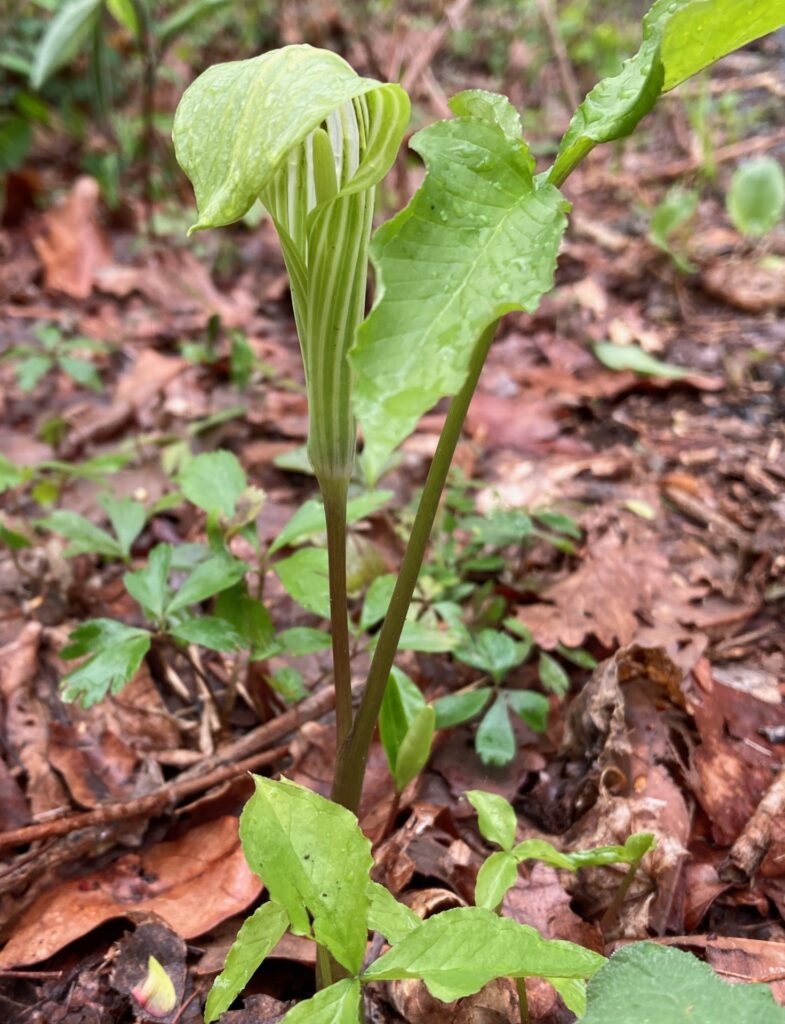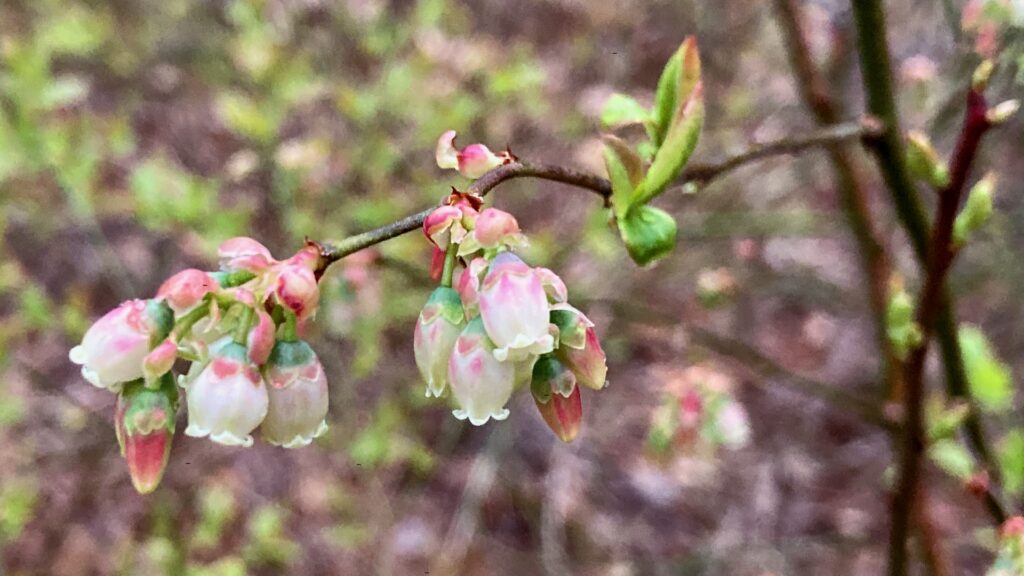Walking back to our campsite, I came across this beautiful garter snake. It was willing to sit still while I took a portrait photograph.
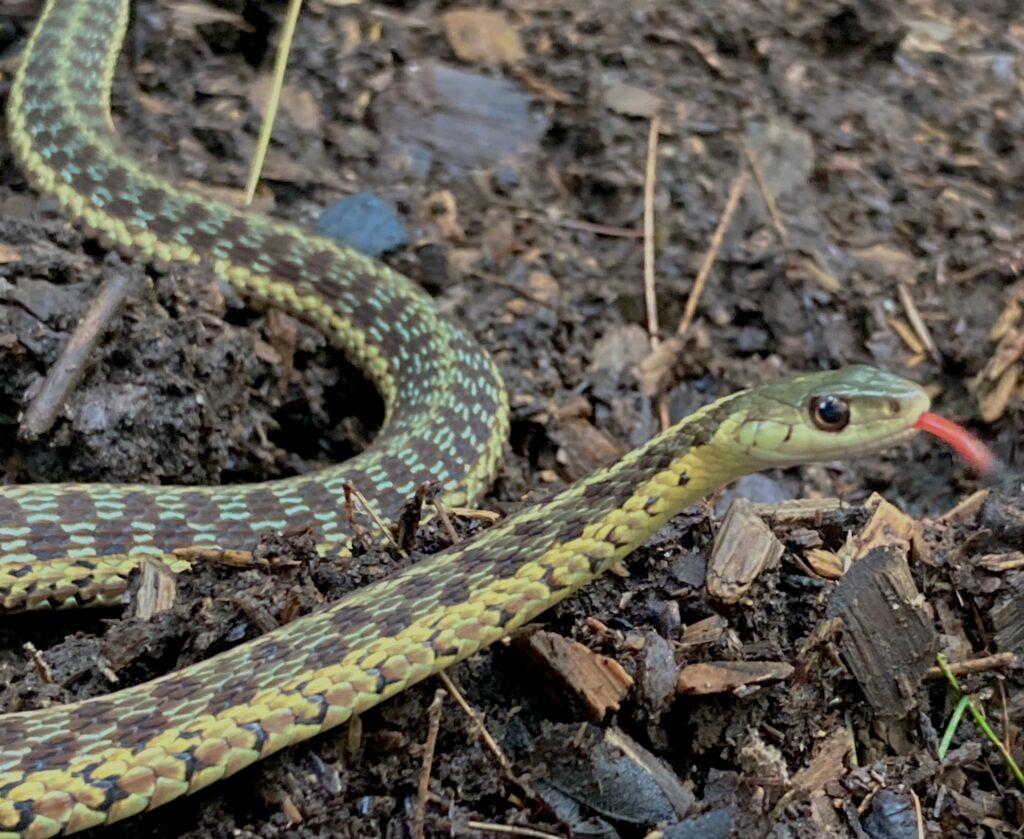
Yet Another Unitarian Universalist
A postmodern heretic's spiritual journey
Walking back to our campsite, I came across this beautiful garter snake. It was willing to sit still while I took a portrait photograph.

Alex, Patricia, Carol, and I took a walk toady across Saco Heath, a peat bog that’s owned by the Nature Conservancy. We walked most of the way across the boardwalk, stopping frequently to look at unusual wildflowers — wild cranberries, pogonias, bog orchids — and other plants.
The fog, low clouds, and light drizzle made it feel like an alien landscape. We wanted to spend more time there, but we only had an hour. Sometime I want to come back and spend half a day enjoying this unusual ecosystem.
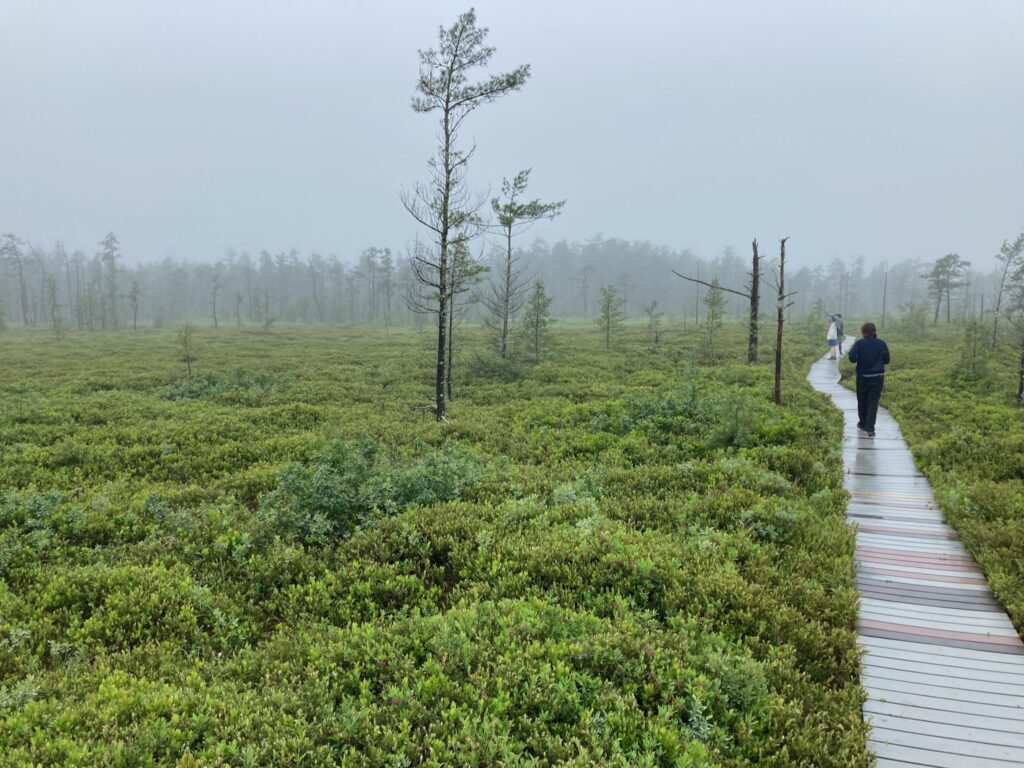
According to tradition, Rev. John Brown, the minister in Cohasset during the Revolutionary War period, gave a stirring reading of the Declaration of Independence from the pulpit of the meeting house to the gathered townspeople not long after July 4, 1776.
I haven’t been able to find out the exact date when Brown read the Declaration to the people of Cohasset. But the Boston Gazette and Country Journal printed the complete Declaration of Independence on July 22, 1776. John Brown had a copy of that printing, and his copy (with his signature) still exists; it was auctioned by Christie’s in 2003. Since Cohasset was a port town, it seems likely that Brown would have received the newspaper by Sunday, July 28. That may be the date on which John Brown read the Declaration of Independence to the town, when people gathered for Sunday worship.
We decided to commemorate the first reading of the Declaration of Independence to Cohasset townsfolk on Independence Day weekend. So we held our reading on July 2 — not historically accurate, but this wasn’t a re-enactment of the original. Instead of having one person read the whole Declaration, in true democratic fashion we had ten readers, beginning with a 12 year old from our Sunday school.
Fifty people showed up, many more than our usual 15-20 people for summer services. This was a true community event, and somewhere between a third and half of those present were not part of our congregation. Our 1747 Meeting House was originally built by the town, and we feel we hold it in trust for the whole town. So we made this a truly non-sectarian commemoration, with no over Unitarian Universalist content.
We had people across the political spectrum, all of whom gathered together to honor the highest ideals of American democracy. It was a surprisingly moving event. We plan to do it again next year.
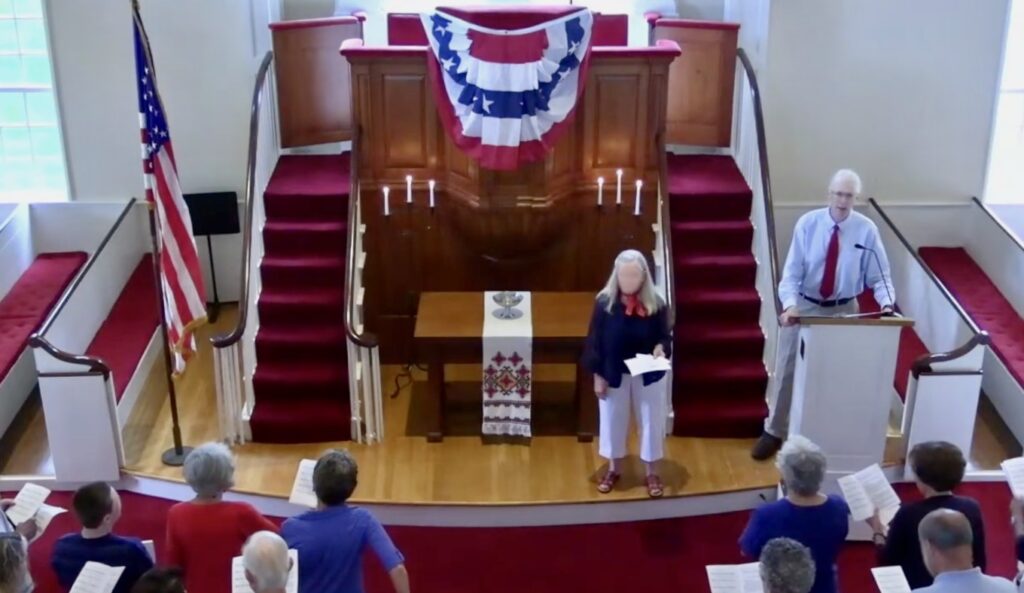
Medeola virginiana, sometimes called Cucumber Root or Indian Cucumber-root, is in bloom in the woodlands around Cohasset right now. As the name implies, the small root is crunchy and white and tastes like cucumber — but you kill the plant when you dig it up for the root, so I stopped foraging for it many years ago.
The flower is tiny, maybe a centimeter or two across. It doesn’t look like much until you look at it through a magnifier:
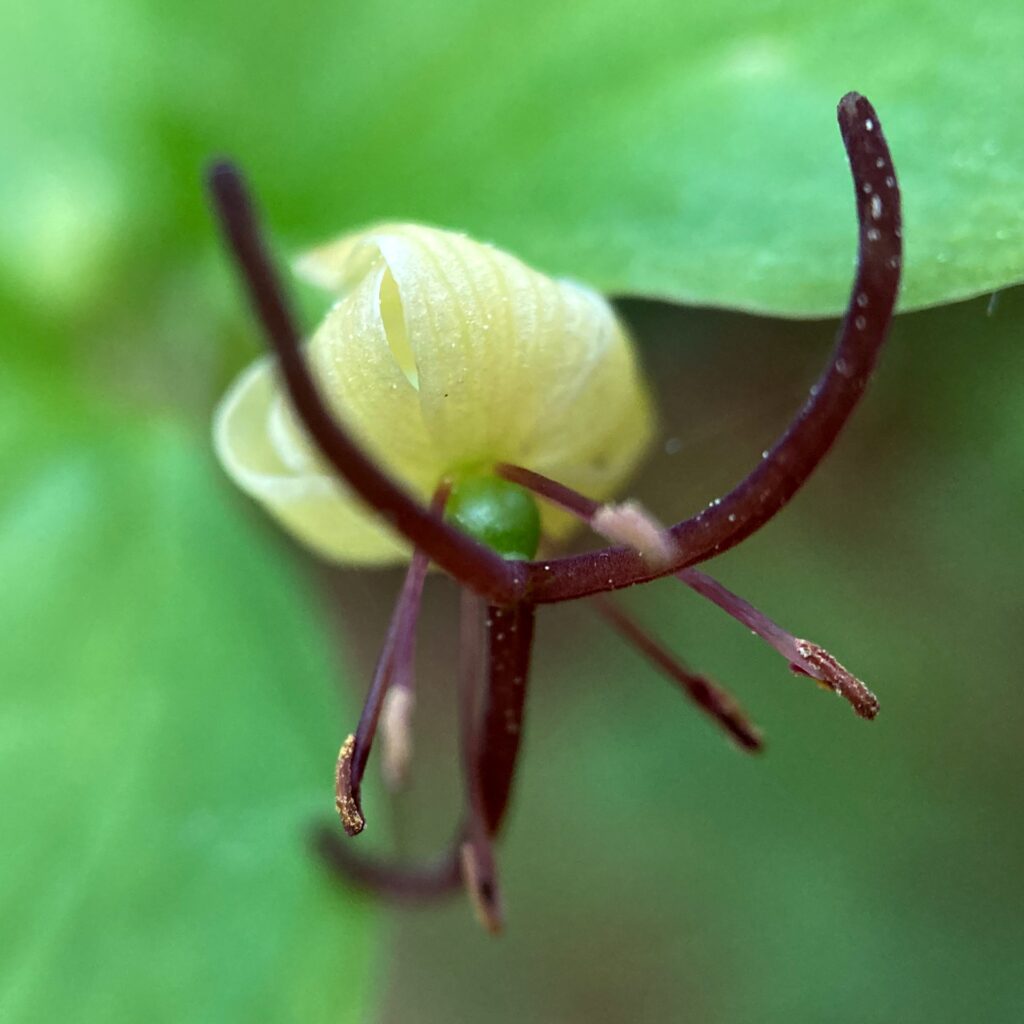
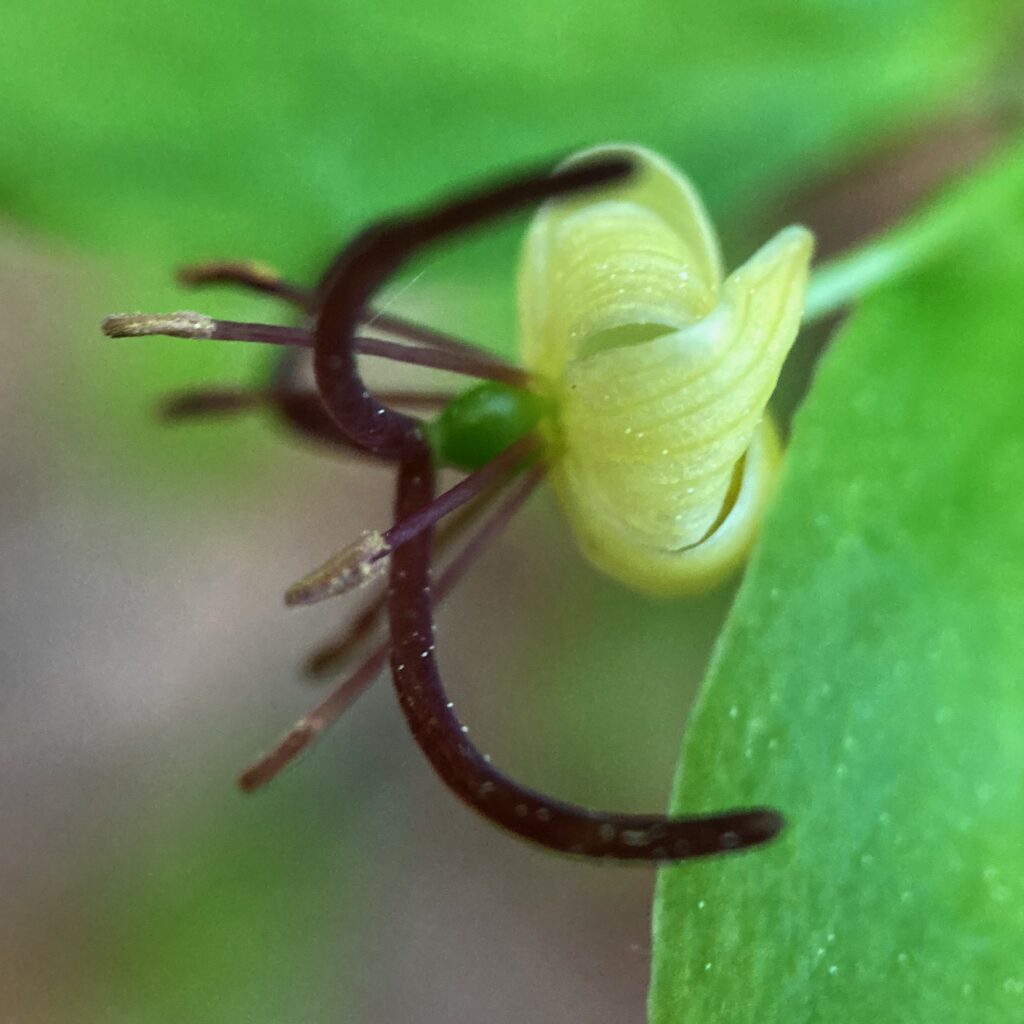
This lovely example of a Pink Lady’s Slipper (Cypripedium acaule) was just off the trail in some conservation land near our apartment. This is one of the flowers I missed most during out thirteen year stay in California, so it was especially good to see one my first spring living back in Massachusetts.
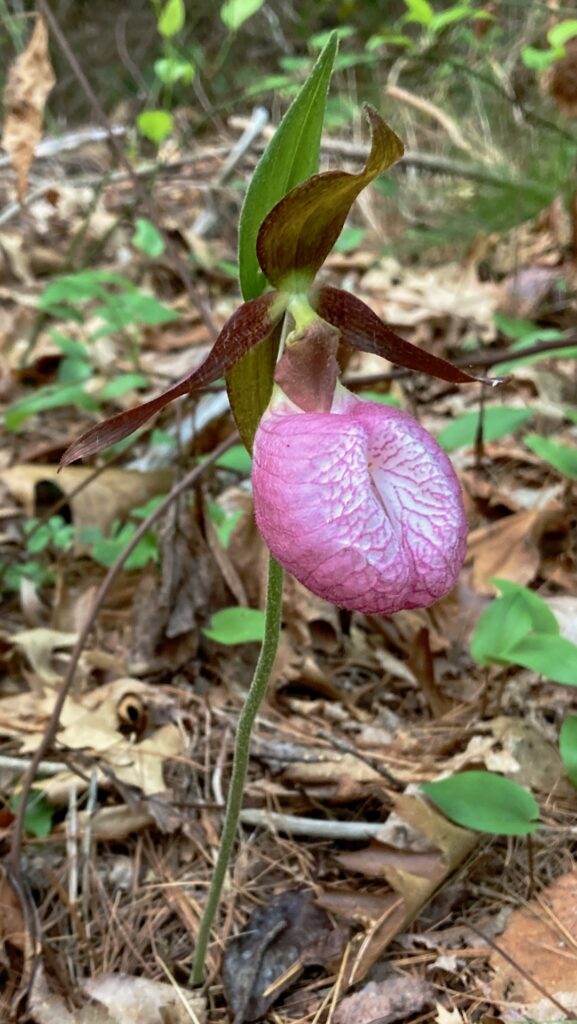
This afternoon, Eco Fest took place on Cohasset Common, right across the street from First Parish in Cohasset. Four of us — Ngoc, Matt, Carol, and I — staffed a table where kids could make seed bombs.
(What’s a seed bomb, you ask? Make a thin wafer, maybe two inches in diameter, out of some air-dry clay. Put a pinch of potting soil in the middle, add a dozen or so seeds, then fold the clay up around the seeds and soil to make a little ball. That’s a seed bomb. You can toss it anywhere. The clay holds in moisture, and the soil provides a medium so the seeds can begin sprouting.)
Our seed bombs were made with seeds from native plants. When older kids made seed bombs with us, we explained about the importance of native plants, and how native plants can attract a wider diversity of pollinators. Ngoc had a cool book with photos of 50 or so native pollinators, which I showed to kids, pointing out pictures of my favorite native pollinators — metallic green bees (genus Agapostemon).
We had a constant stream of kids coming to our booth, so I never even got to visit any other booths. But I could see there were some interesting groups present. In addition to commercial vendors, I saw booths staffed by the Cohasset High School Green Team, the North and South Rivers Watershed Association, a group providing recycling information, the Cohasset Garden Club, and more. I’m already looking forward to next year.
Another worthy citizen science project…. Here in New England, the Native Plant Trust trains people to be Plant Conservation Volunteers (PCVs) for the New England Plant Conservation Program (NEPCoP):
“PCVs support professional botanists and State Heritage Programs by gathering vital data in the field. Across the six states of New England, PCVs conduct field monitoring, seed collection, and habitat management. PCVs now number in the hundreds, but as native plant habitats face mounting stresses, we need even more passionate volunteers to help save New England’s native plants.”
There’s a species of seaweed that grows along the coast here in Cohasset with the scientific name Ulva intestinalis; so named because it looks like intestines. A common English name for it is Gutweed, though I’d rather call it Intestine seaweed.
Anyway, it’s one of my favorite seaweeds. How could I not like something that looks like little green intestines?
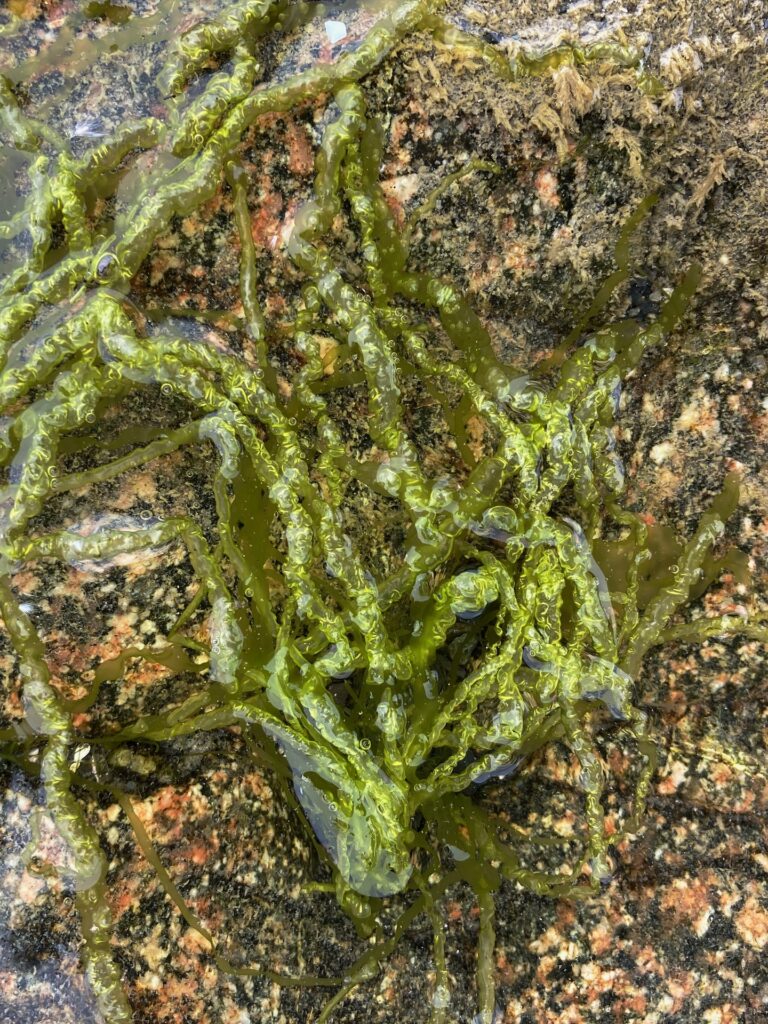
Today while walking in the Attleboro Springs Audubon Sanctuary, I saw Jacks-in-the-pulpit (Arisaema triphyllum) in bloom. The dramatic striped spathe shelters a spadix on which the flowers are born. This is one of my favorite native flowers — we used to grow them when we lived in the rental share in Concord center — and seeing their blooms today prompted me to learn a little more about them.
According the Extension service of North Carolina State State University, individual Arisaema triphyllum plants can change between male and female from year to year: “This unique plant, which is pollinated by flies and gnats, has the ability to change gender. A plant that starts out as male can spontaneously change to female the next year and vice versa. …”
Or, according to another source, first year plants only produce male flowers; then the plant becomes hermaphroditic, producing both male and female flowers. In any case, as is so often true, our stereotypical human norms around gender and biological sex being determined from birth do not apply to all organisms (the stereotypes don’t even always apply to human organisms).
A fascinating plant. Makes me want to start growing Arisaema triphyllum again.
